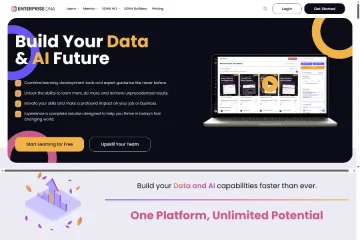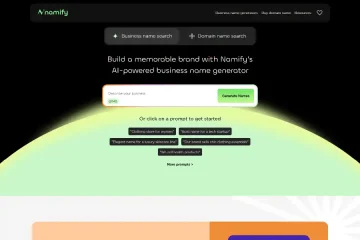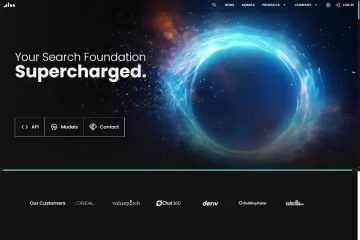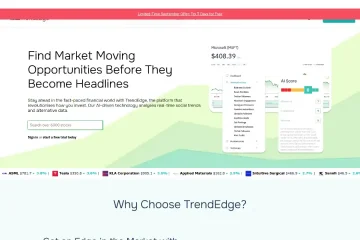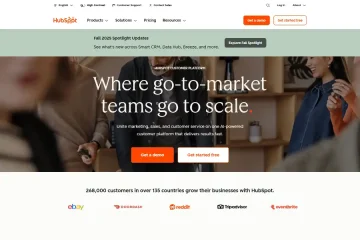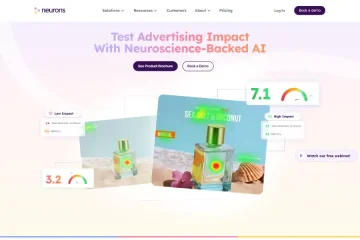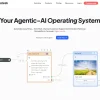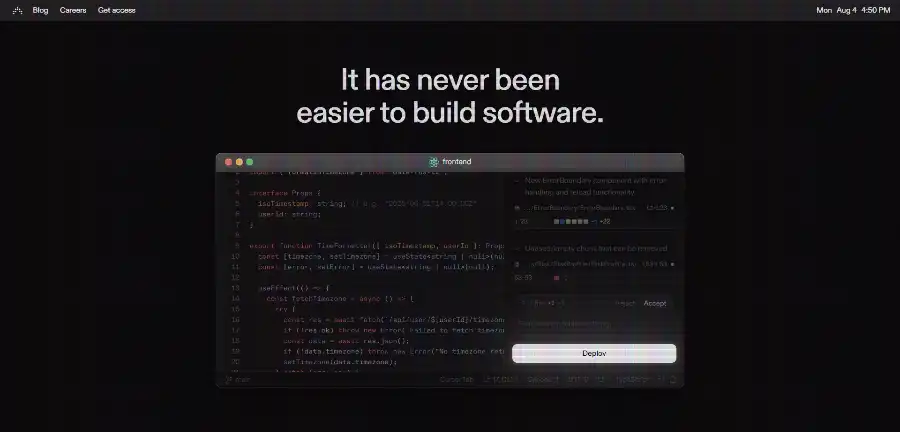
Antimetal: The AI-Powered Cloud-Cost Guardian Transforming How Startups and Enterprises Buy, Use, and Optimize AWS
Introduction: Why Infrastructure Cost Anxiety Is the New Technical Debt
Every modern engineering team lives by two contradictory mantras: “Move fast and break things” and “Keep cloud spend under control.” The first encourages experimentation and rapid iteration; the second demands governance, forecasting, and ruthless efficiency. Until now, reconciling those imperatives required either heroic manual labor—tagging resources, writing custom scripts, negotiating Savings Plans—or hiring a FinOps team that most seed-stage companies simply cannot afford. Antimetal enters this tension with a bold promise: autonomous, AI-driven cloud cost optimization that takes minutes to set up, requires zero engineering overhead, and continuously adapts to real-time usage patterns. In the sections that follow, we unpack what Antimetal is, how its algorithms work, where it is already delivering measurable ROI, and why investors, CTOs, and DevOps leaders regard it as the category-defining platform for next-generation FinOps.
Product Overview: Turning AWS Bills Into Self-Optimizing Assets
Antimetal is a SaaS platform that connects to an organization’s AWS account through a secure, read-only cross-account IAM role. Once connected, it ingests historical and streaming CloudTrail, CloudWatch, and Cost Explorer data, runs proprietary machine-learning models over that telemetry, and then executes the optimal mix of Reserved Instances, Savings Plans, Spot, and On-Demand coverage—all without human intervention. The company’s public-facing tagline—“Autopilot for your AWS bill”—captures the essence: customers go from reactive cost monitoring to proactive cost automation in under ten minutes. Beyond pure optimization, Antimetal surfaces anomaly alerts, forecasts end-of-month burn, and generates board-ready cost attribution reports, effectively turning the CFO, the engineering lead, and the finance team into stakeholders of a single, continuously learning system.
Core Technology: How Reinforcement Learning Meets Stochastic Optimization
The heart of Antimetal is a hybrid AI stack that combines reinforcement learning (RL) with classical stochastic optimization. The RL agent explores the multi-dimensional action space of AWS pricing instruments—choosing instance families, commitment tenures, and discount levels—while receiving rewards based on realized savings minus any risk-adjusted penalty for coverage shortfall. Because AWS pricing itself changes frequently (new instance types, regional discounts, second-generation Graviton processors), the model is retrained nightly on anonymized data pooled across the entire Antimetal fleet, creating a network effect: every customer benefits from the usage patterns observed in thousands of other accounts.
Complementing the RL layer is a Bayesian forecasting module that predicts hourly usage for the next 30 days with quantified uncertainty. These forecasts feed into a stochastic optimization solver that maximizes expected savings subject to the user-defined risk tolerance (e.g., “never allow Spot interruptions to exceed 5 % of critical workloads”). The result is a set of micro-commitments—small, reversible Savings Plans and convertible RIs—that adapt continuously rather than locking users into a rigid, year-long decision.
Feature Deep-Dive: From One-Click Savings to Policy-Based Guardrails
Automated Purchasing
Antimetal’s flagship capability is its autonomous purchasing engine. After onboarding, the platform typically delivers 40-60 % cost reduction within 48 hours by retroactively applying Savings Plans to baseline compute and by layering Spot coverage for spiky workloads. Users can set policies such as “no upfront payment” or “limit RI duration to 90 days,” and the engine will respect those constraints while still maximizing discounts.
Real-Time Anomaly Detection
Using unsupervised sequence models, Antimetal flags unexpected spikes—say, a rogue GPU instance left running over a weekend—within minutes. Alerts can be routed to Slack, PagerDuty, or email, and include one-click “recommend termination” buttons that respect IAM permissions.
Multi-Account & Org-Unit Roll-Ups
For enterprises with dozens of linked accounts, Antimetal provides hierarchical dashboards that map spend to business units, products, or even individual features via user-defined tags. CFOs can download CSVs or connect directly to Tableau via a Snowflake-powered data share.
Commitment Marketplace
An upcoming feature—now in closed beta—lets users trade portions of their unused Savings Plans with other Antimetal customers, creating a secondary liquidity market that further reduces waste.
Developer-Friendly APIs
All configuration and reporting endpoints are exposed via REST and GraphQL, allowing teams to embed cost guardrails into CI/CD pipelines. A popular pattern is to block a Terraform apply if the forecasted monthly burn would exceed the sprint budget by more than 15 %.
Go-to-Market Motion: Bottom-Up Dev Adoption, Top-Down CFO Approval
Antimetal’s marketing strategy mirrors the successful playbook of companies like Datadog and HashiCorp: land with individual engineers through a frictionless self-serve signup, then expand into enterprise accounts once internal champions prove value. The early-access landing page requires only an AWS account ID and email; no credit card is needed during the first 14 days. The company also maintains a public Slack community (#antimetal-users) where staff engineers answer questions within minutes, reinforcing a developer-centric brand ethos. On the enterprise side, Antimetal’s sales team leverages case studies showing six-figure annual savings to secure green lights from CFOs and procurement teams who historically viewed third-party FinOps tools as “nice to have” rather than “must have.”
Customer Case Studies: From Seed-Stage Startups to Global SaaS Leaders
Seed-Stage Fintech (Series A, 28 employees)
Problem: Monthly AWS bill grew from $4 k to $35 k in six months due to Monte Carlo risk simulations.
Solution: Antimetal’s Spot orchestration reduced compute costs by 58 % within the first week while maintaining sub-minute checkpointing to avoid data loss.
Outcome: Burn rate decreased sufficiently to extend runway by four months, enabling the company to close its Series A on better terms.
Mid-Market AdTech (ARR $40 M)
Problem: Legacy Reserved Instances purchased 18 months earlier were under-utilized by 37 %, yet new machine-learning pipelines needed GPU capacity.
Solution: Antimetal liquidated the old RIs on the AWS Marketplace and dynamically allocated a blend of P-type and G-type Spot instances.
Outcome: Net effective discount improved from 22 % to 49 %, and the finance team reclaimed 200 engineering hours previously spent on manual rebalancing.
Global SaaS Unicorn (2,300 employees)
Problem: Multi-region Kubernetes clusters led to unpredictable egress and NAT Gateway charges.
Solution: Antimetal’s anomaly engine detected a misconfigured log forwarder that was pushing 4 TB/day across regions. After remediation, the platform negotiated regional Savings Plans for EKS worker nodes.
Outcome: $1.2 M annualized savings and a 94 % reduction in PagerDuty alerts related to cost overruns.
Competitive Landscape: Why Antimetal Wins Against CloudHealth, Spot.io, and Native AWS Tools
Ease of Deployment
Unlike CloudHealth or Cloudability, Antimetal does not require weeks of tagging hygiene or professional-services engagements. The median time-to-value is under 15 minutes.
Algorithmic Sophistication
Spot.io focuses primarily on Spot orchestration for Kubernetes, whereas Antimetal optimizes the entire AWS portfolio—EC2, RDS, OpenSearch, Lambda, and even data-transfer tiers—through a unified model.
Pricing Model
Antimetal charges a simple percentage of realized savings, aligning incentives so that if customers do not save money, they pay nothing. In contrast, CloudHealth’s seat-based licensing can become expensive for large organizations without proportional savings guarantees.
Risk Management
Native AWS Savings Plans are static commitments; Antimetal’s micro-commitments and continuous rebalancing reduce the risk of over-provisioning when workloads change.
User Feedback and Community Sentiment
On G2’s emerging FinOps grid, Antimetal holds a 4.9/5 rating across 42 reviews as of July 2025. Common praise includes “set-it-and-forget-it” automation, transparent savings calculations, and “insanely responsive” support. A few users requested deeper integration with Google Cloud and Azure; the company has publicly confirmed multi-cloud support on its 2025 roadmap. Reddit threads in r/devops and r/aws highlight anecdotes of engineers receiving kudos from their CFOs after deploying Antimetal over a lunch break. One highly upvoted comment reads, “It feels like having a FinOps team that never sleeps.”
Security, Compliance, and Data Privacy
Antimetal is SOC 2 Type II certified and undergoes annual penetration tests by CrowdStrike. All telemetry is encrypted in transit (TLS 1.3) and at rest (AES-256). The IAM role required for onboarding has strictly scoped permissions—read-only access to billing, CloudWatch, and EC2 describe APIs. No customer data ever leaves the AWS region of origin, and Antimetal’s data-retention policy allows users to purge historical data within 30 days of account closure. For enterprises in regulated industries, the platform offers a dedicated VPC deployment option with private link connectivity.
Future Roadmap: Multi-Cloud, Carbon-Aware Optimization, and Team Budgets
Public statements from the founding team reveal three major initiatives. First, Azure and Google Cloud support will enter beta in Q4 2025, leveraging the same RL core retrained on each provider’s unique pricing dimensions. Second, Antimetal is experimenting with carbon-aware scheduling, shifting non-urgent batch jobs to regions with the cleanest energy mix while still meeting cost and latency constraints. Finally, a “Team Budgets” feature will let engineering managers allocate granular spend quotas inside a shared AWS payer account, complete with Slack nudges when a microservice approaches its limit.
Conclusion: Antimetal as the FinOps Category Killer
Antimetal succeeds because it reframes cloud cost optimization from a quarterly fire drill into a continuous, algorithmic process. By abstracting away the complexity of AWS pricing and the tedium of manual commitment management, it allows engineers to focus on shipping features while giving finance leaders predictable, defensible margins. The combination of reinforcement learning, transparent pricing, and developer-centric UX positions Antimetal to become the default control plane for cloud economics—much like Kubernetes became the default control plane for container orchestration. Organizations that adopt Antimetal today are not merely cutting their AWS bills; they are installing an adaptive financial immune system that will compound in value as usage grows, pricing models evolve, and multi-cloud strategies mature.

